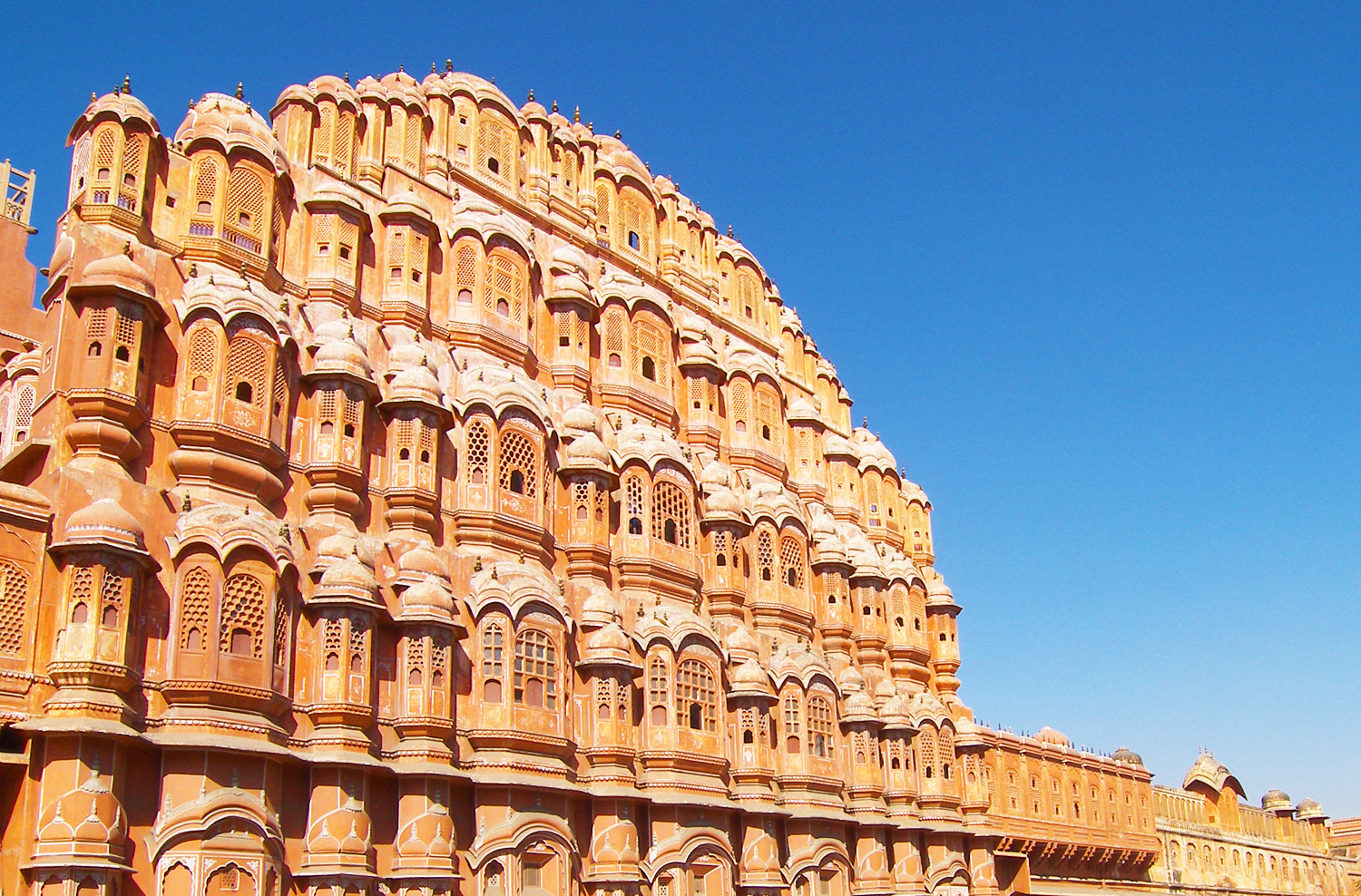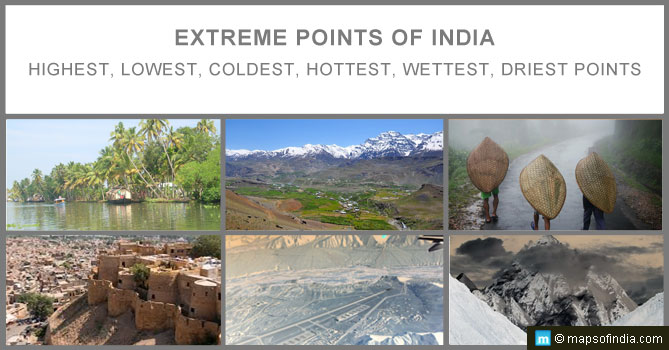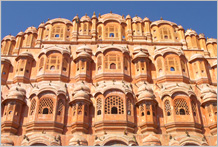About Rajasthan
Rajasthan is located in the northwestern part of the subcontinent. It is bordered on its west and northwest by Pakistan, on its north and northeast by the states of Punjab, Haryana, and Uttar Pradesh, on its east and southeast by the states of Uttar Pradesh and Madhya Pradesh, and on its southwest by the state of Gujarat. The Tropic of Cancer passes through its southern tip in the Banswara district. The state has an area of 3,42,239 square kilometers. The capital of Rajasthan is Jaipur.
| Facts on Rajasthan | |
|---|---|
| Official Website | www.rajasthan.gov.in |
| Date of Formation | Nov 1, 1956 |
| Area | 342,239 sq km |
| Density | 201/Km2 |
| Total Population (2011) | 68,548,437 |
| Males Population (2011) | 35,550,997 |
| Females Population (2011) | 32,997,440 |
| No. of District | 33 |
| Capital | Jaipur |
| Rivers | Luni, Banas, Kali Sindh, Chambal, Jawal etc. |
| Forests & National Park | Keoladeo NP, Ranthambore NP, Bassi WS, Tal Chhapar WS, National Chambal WS etc. |
| Languages | Rajasthani, Marwari, Mewari, Dhundhari, Mewati and Harauti, Hindi, Punjabi |
| Neighbours State | Madhya Pradesh, Gujarat, Haryana, Uttar Pradesh, Delhi, Punjab |
| State Animal | Camel |
| State Bird | Great Indian Bustard |
| State Tree | Khejri |
| State Flower | Rohida |
| Net State Domestic Product (2011) | 42434 |
| Literacy Rate (2011) | 80.33% |
| Females per 1000 males | 926 |
| Assembly constituency | 200 |
| Parliamentary constituency | 25 |
 Places of Interest
Places of Interest Travel Guide
Travel Guide Festivals & Culture
Festivals & Culture Famous Places
Famous Places Forts & Palaces
Forts & Palaces
Geography and Climate of Rajasthan
Western Rajasthan is relatively dry and infertile; this area includes some of the parts of Thar Desert, also known as the Great Indian Desert. In the Southwestern part of the state, the land is wetter, hilly, and more fertile. The climate varies throughout Rajasthan. On average, winter temperatures range from 8° to 28° C (46° to 82° F) and summer temperatures from 25° to 46° C (77° to 115° F). Average rainfall also varies; the western deserts accumulate about 100 mm (about 4 in) annually, while the southeastern part of the state receives 650 mm (26 in) annually, most of which falls from July through September during the monsoon season.
History of Rajasthan
Archaeological and historical evidence shows a continuous human habitation of the area dating back to 100,000 years. Between the 7th and the 11th century AD, several dynasties arose, with Rajput strength reaching its peak at the beginning of the 16th century. Emperor Akbar brought the Rajput states into the Mughal Empire; by early 19th century they allied with the Marathas. With the decline of the Mughals, the Rajputs gradually clawed back their independence through a series of spectacular victories, but, by then a new force to reckon with, had emerged on the scene in the form of the British. Most Rajput states entered into alliances with the British, which allowed them to continue as independent states, each with its own maharaja, subject to certain economic and political constraints. These alliances proved to be the beginning of the end of the Rajputs, and soon the extravagance and indulgence of the rulers led to the disintegration of the Rajput kingdoms. The present form of Rajasthan came into being after the Independence. More Detail...
Demographics of Rajasthan
Rajasthan has a population of 6,85,48,437 as per the 2011 census. The population growth over the last ten years has been around 21.44%. The sex ratio of Rajasthan is 926 per 1000 males. The literacy rate in the state is 67.06%. The largest cities of Rajasthan are Jaipur, Jodhpur and Kota. The state of Rajasthan has 33 districts.
Government and Politics of Rajasthan
Rajasthan has a single-chamber legislative assembly with 200 seats. The state sends 35 members to the Indian Parliament: 10 to the Rajya Sabha (Upper House) and 25 to the Lok Sabha (Lower House). Local government is based on 30 administrative districts. In politics, Rajasthan is dominated by two major parties: the Bharatiya Janata Party (BJP) and the Indian National Congress (INC).
Economy and Infrastructure of Rajasthan
Rajasthan's economy is mainly agricultural; millet, wheat, maize (corn), and cotton are grown. Though parts of the state are extremely dry, and are covered by the Thar Desert, the total cultivable area in the state is 27,465 thousand hectares, and the sown area, 20,167 thousand hectares. Tourism is also an important part of the economy.
Primarily an agricultural and pastoral economy, Rajasthan has good reserve of mineral resources. The state accounts for India's entire output of zinc concentrates, and also produces emeralds and garnets, gypsum, silver ore, asbestos, feldspar and mica. It has rich salt deposits at Sambhar and elsewhere and copper mines at Khetri and Dariba. The white marble is mined at Markana near Jodhpur. The main industries are of textiles, rugs and woolen goods, vegetable oils and dyes. Heavy industries include the construction of railway rolling stock, copper and zinc smelting. The chemical industry also produces caustic soda, calcium carbide and sulphuric acid, fertilizer, pesticides and insecticides. The principal industrial complexes are at Jaipur, Kota, Udaipur and Bhilwara.
Having acres of arid land, Rajasthan needs extensive irrigation. It receives water from the Punjab rivers and also from the Western Yamuna (Haryana) and Agra canals (Uttar Pradesh) and from the Sabarmati and Narmada Sagar projects to the south. There are thousands of tanks (village ponds or lakes), but they suffer from drought and silt. Rajasthan shares the Bhakra Nangal project with the Punjab and the Chambal Valley project with Madhya Pradesh; both are used to supply water for irrigation and for drinking purposes. The Rajasthan Canal, renamed the Indira Gandhi Canal in the mid-1980s in the memory of the late Prime Minister, carries water from the Beas and Sutlej rivers in Punjab some 400 miles to irrigate desert land in northwestern and western Rajasthan. More Detail...
Society and Culture of Rajasthan
The Rajputs though representing only a small percentage of the population are the most important section of the population in Rajasthan. They are proud of their warlike reputation and of their ancestry. The Brahman class is subdivided into many Gotras, while the Mahajans (the trading class) are subdivided into a bewildering number of groups. Some of these groups are Jainas, while others are Hindus. In the north and west the Jats and Gujjars are among the largest agricultural communities.
Aboriginal peoples in the Alwar, Jaipur, Bharatpur and Dholpur areas include the Minas (Mewatis); the Banjaras, who are travelling tradesmen and artisans; and the Gadia Lohars, another itinerant tribe, who make and repair agricultural and household implements. The Bhils, one of the oldest peoples in India, inhabit the districts of Bhilwara, Chittaurgarh, Dungarpur, Banswara, Udaipur and Sirohi and are famous for their skill in archery. The Grasias and nomadic Kathodis live in the Mewar region. Sahariyas are found in the Kota district, and the Rabaris of the Marwar region are cattle breeders. More Detail...
Festivals of Rajasthan
The spring festival Gangaur during late March to early April and the Teej festival between early and late August is important in Rajasthan. The Teej welcomes the monsoon, when the state's many lakes become full. The Pushkar camel and cattle fair during mid-November, the Nagaur festival during late January to early February and the Koolyat Fair at Bikaner during mid to late November are well known fairs. The Desert Festival at Jaisalmer during early to mid-February is a famous modern fair. More Detail...
Language of Rajasthan
The principal language of the state is Rajasthani, comprising a group of Indo-Aryan dialects derived from Dingal, a tongue in which bards once sang of the glories of their masters. The four main dialects are Marwari (in western Rajasthan), Jaipuri or Dhundhari (in the east and southeast), Malvi (Malwi; in the southeast), and, in Alwar, Mewati, which shades off into Braj Bhasa in Bharatpur district. The use of Rajasthani is declining with the spread of modern education, and its place is being taken by Hindi (the official state language of Rajasthan).
almi Vada
Education in Rajasthan
In the recent years, the state of Rajasthan has made a significant growth in the area of education. As per census 2011, the literacy rate in the state was recorded at 67.06%. The school level education in the state is either affiliated to the Board of Secondary Education, Rajasthan (BSER) or the Central Board of Secondary Education (CBSE). There are about nine universities in the state with more than 250 colleges. There are about 23 polytechnic colleges and more than 150 Industrial Training Institutes (ITI). There are three major and popular education institutes in the state - IIT Jodhpur, Birla Institute of Technology and Science, Pilani and IIM Udaipur.
Religion in Rajasthan
Hinduism, the religion of most of the population, is generally practiced through the worship of Brahma, Shiva, Shakti, Vishnu (Visnu), and other gods and goddesses. Nathdwara is an important religious centre for the Vallabhacharya sect of Krishna followers. There are also followers of the Arya Samaj, a reforming sect of modern Hinduism, as well as other forms of that religion. Jainism is also important; it has not been the religion of the rulers of Rajasthan but has followers among the trading class and the wealthy section of society. Mahavirji, Ranakpur, Dhulev, and Karera are the chief centres of Jaina pilgrimage. Another important religious sect is formed by the Dadupanthis, the followers of Dadu (d. 1603), who preached the equality of all men, strict vegetarianism, total abstinence from intoxicating liquor, and lifelong celibacy.
Tourism of Rajasthan
Endowed with natural beauty, Rajasthan attracts thousands of tourists in India. Tourism makes up of eight percent of the state's domestic product. Rajasthan is famous for the forts, temples and decorated Havelis. Many old and neglected forts and palaces have been converted into heritage hotels. Due to this, employment in the hospitality sector has increased. Rajasthan has several tourist sights, especially in ancient and medieval architecture. Places of interest are Mount Abu, Ajmer, Alwar (Sariska tiger sanctuary), Bharatpur (Keoladeo bird sanctuary),Bikaner, Jaipur (the Pink City), Jodhpur, Udaipur, Pali, Jaisalmer and Chittorgarh. Tourism was given industry status in 1992.
More Detail...
Cities to visit in Rajasthan
|
Ajmer Bikaner Alwar Udaipur |
Jaipur Jodhpur Pushkar Bharatpur |
Chittaurgarh Jaisalmer Kota Bundi |
Transportation
The state is connected to many national highways, most popular being NH 8. There are three airports in Rajasthan which connect the state with other major cities of the country. Most of the cities of the state are connected through railways. The Kota City is the Electrified section which is served by three Rajdhani Expresses and other trains to all other major cities. It also has an international railway, the Thar Express which runs from Jodhpur to Karachi. The state is well connected to other cities through state and national highways. Rajasthan State Road Transport Corporation (RSRTC) and many private operators operate bus services within the state.
Best Time to visit Rajasthan
Though Rajasthan can turn to be a year around destination, the locals as well as travellers recommend October to March as the best period to visit the state. With a majority of desert festivals planned for winters, Rajasthan can lift your spirits in an excellent way. If you're looking forward to visit the very popular hills of Mt. Abu, then a visit during the summer months of May, June and July will be overwhelming.
Weather of Rajasthan
Just like its topography, Rajasthan witnesses varying climate in different cities. While the pre-monsoon season extends from April to June, the Monsoon season brings rain to Rajasthan in June (for eastern regions) and mid-July (for western arid regions). Then, there is a Post Monsoon season which starts from mid-September and continues till November. Lastly, there is the Winter season which extends from December to March, with January being the coldest month of the year.
How to reach Rajasthan
Rajasthan is well connected with other Indian states via road, rail and air. On the contrary, if you are an International tourist, then you can choose Delhi or Mumbai for reaching Rajasthan. Delhi's Indira Gandhi International Airport (IGI) is just 250KM from Rajasthan. You can easily catch a flight connecting Delhi and Mumbai and further to Jaipur (the capital city of Rajasthan). Talking about Indian travellers, well they can reach Rajasthan via direct superfast and several express trains. These trains connect several cities to Jaipur and are cost-efficient too. Making an advanced booking with a confirmed or RAC status ticket is highly advised prior to boarding a train to Rajasthan.
WBST111114ET
EBAKB121114
Blogs about Rajasthan

Hawa Mahal – Pink Palace In The Pink City : The city of Jaipur, the capital of Rajasthan, is renowned for its royal atmosphere, and at its heart lies the magnificent Hawa Mahal, also known as the 'Palace of Winds'. Constructed in 1799 by Maharaja Sawai Pratap Singh, the ruler of Rajasthan and the visionary behind the city of Jaipur, this architectural marvel reflects dedication, purpose, and creativity. The Hawa Mahal is a distinctive five-story structure resembling Lord Krishna's crown adorned with peacock feathers. The…

Live-in Relationships Mushrooming in India, Despite Odds : The institution of marriage has been considered as a sacred bond between two individuals. It has been prevailing in India since the ancient times in every religion. The concept of matrimony has got the encouragement, regard and license from the society for two adults to live together peacefully. A couple ties the knot and inks a lifelong agreement and pledge to remain faithful to each other for their entire life, despite some healthy conflict. But…

Extreme Points of India : Finally, the people who see the world in black and white, love extremities, and are just naturally inclined to go to paramount heights, have something for them in here. You'll naturally like this blog talking about extremities. India has a fair share of its extreme points, ranging from the coldest place to lowest point on the surface. So, let's just absorb this vital information about our country already. Shall we? Highest Point: K2 Being in…

Bhilwara Model Sets a Perfect Example to Fight Against Covid-19 : Bhilwara has been dubbed a ‘textile city’ in Rajasthan, and its 250 km away from the state’s capital Jaipur. Currently, the textile city of India has been in the news for setting the perfect example of how to fight against novel coronavirus. First case rings the alarm bell The first COVID-19 case in Bhilwara was detected on March 19; back then, the city feared that it might become the country’s major epicentre for the eruption…

Here is How State Governments Have Acted to Combat COVID-19 India : ? (Above is a map of India depicting the state-wise breakup of coronavirus cases in India) Various state governments have taken several steps in the backdrop of the deadly coronavirus outbreak across the country. Many welfare measures were taken so that the livelihoods of daily wage workers should not be affected. Various state governments have also asked private firms to continue the salary to their staffs despite the slowdown of the economy. Here is a…
Last Updated on : June 01, 2021







